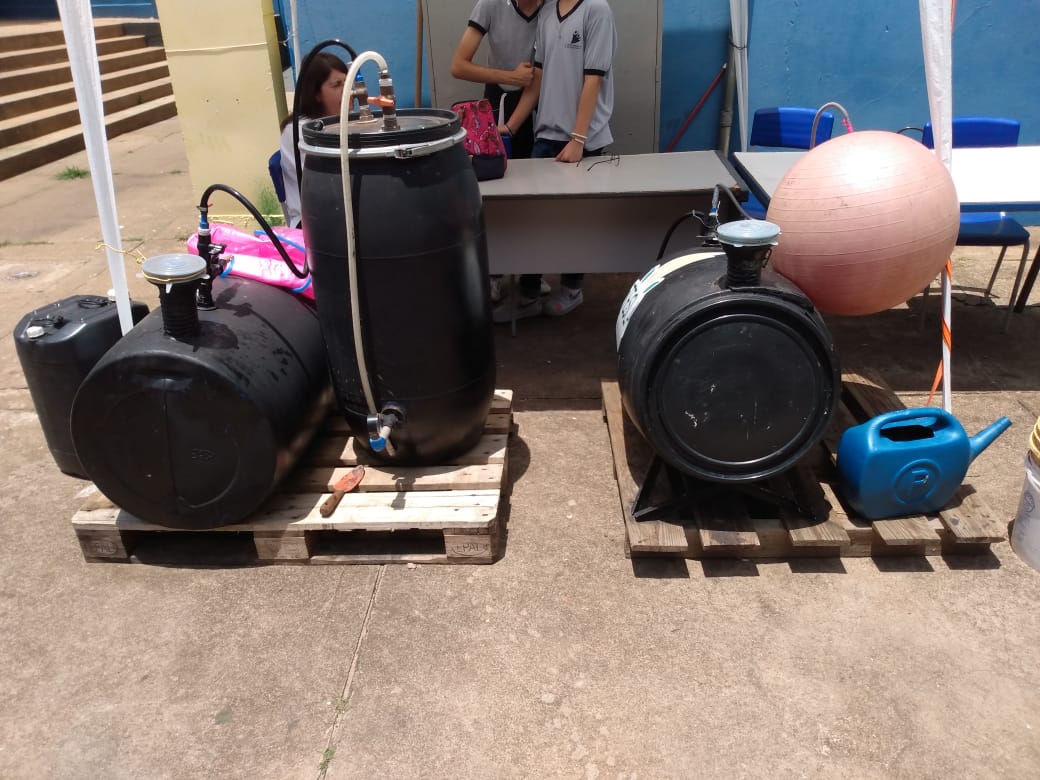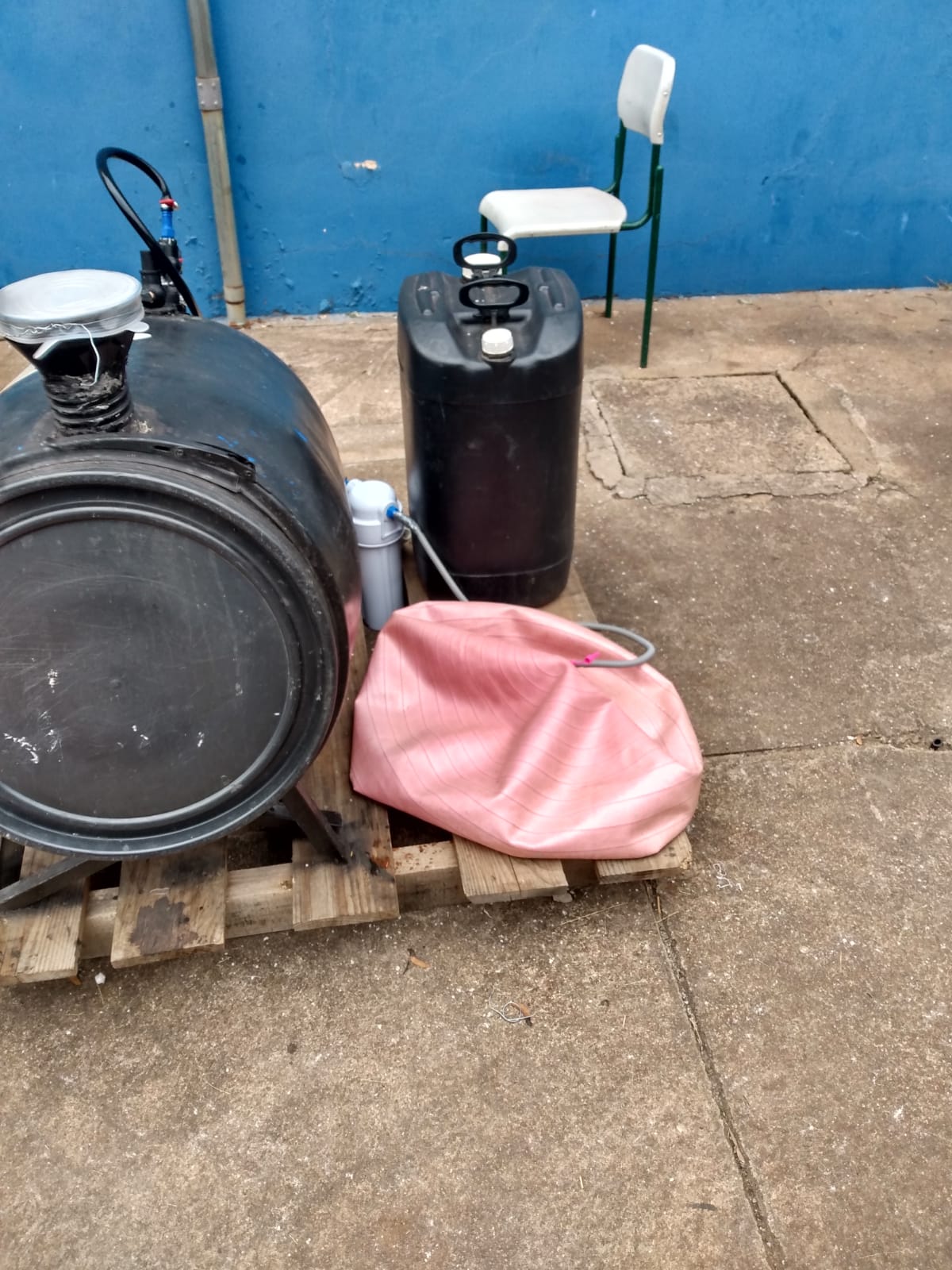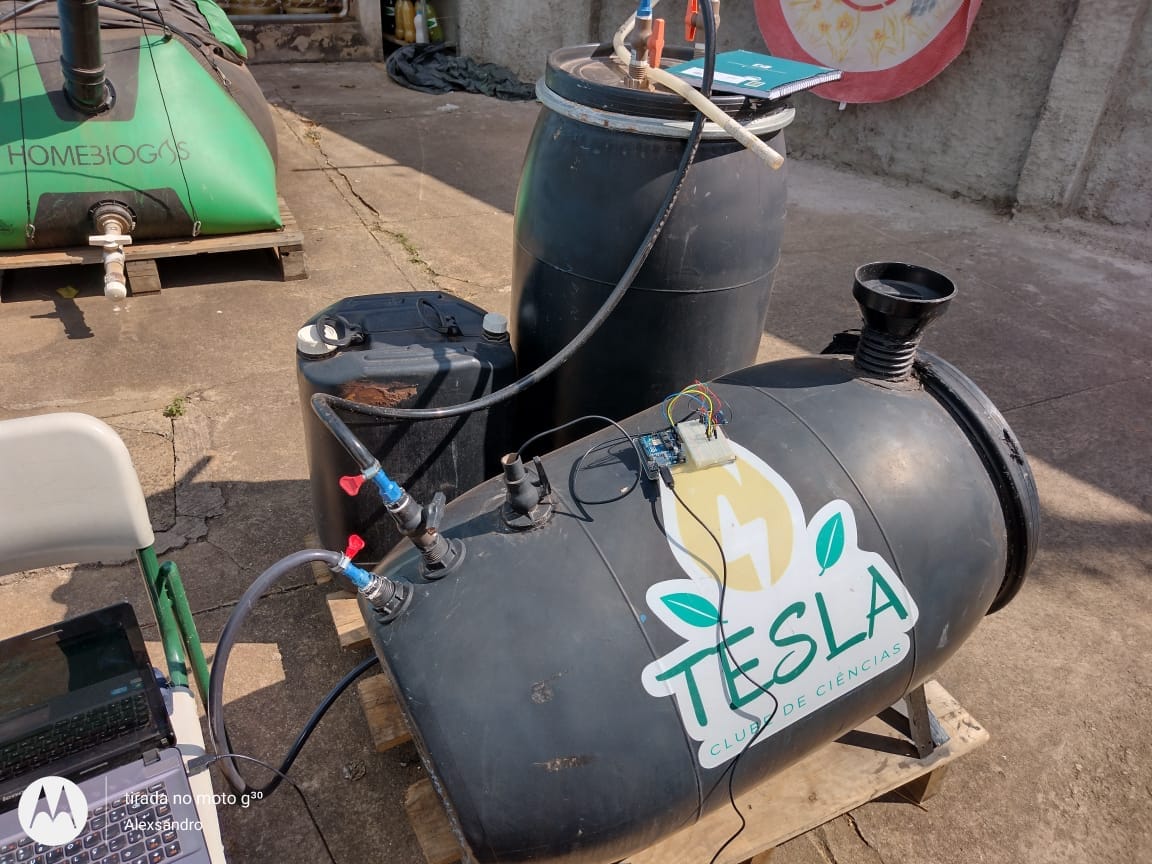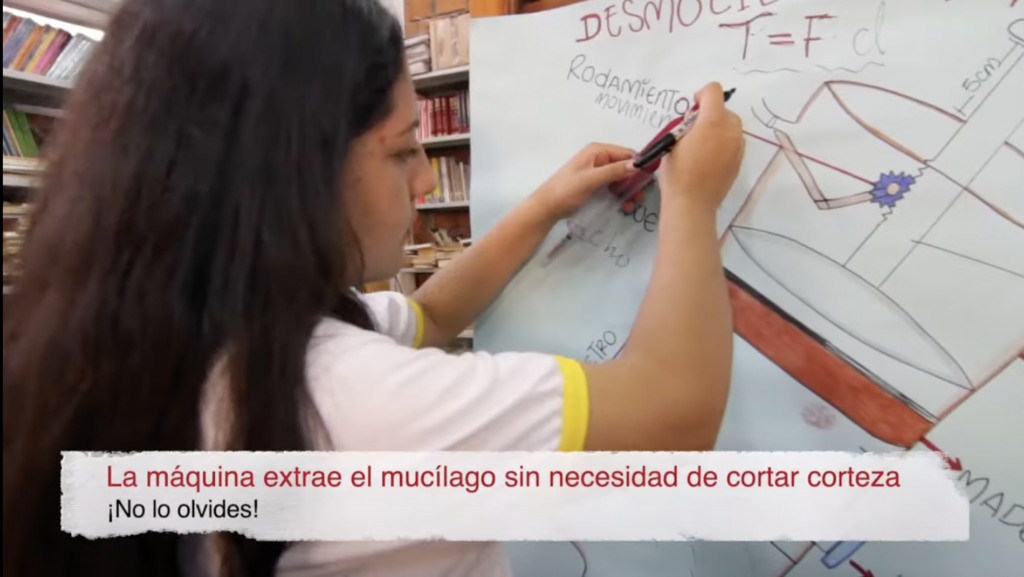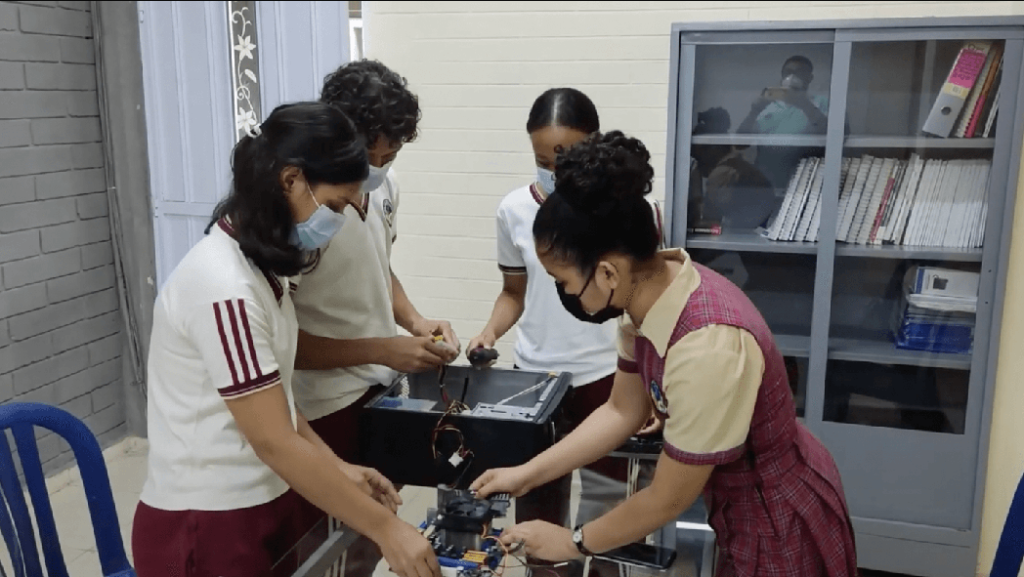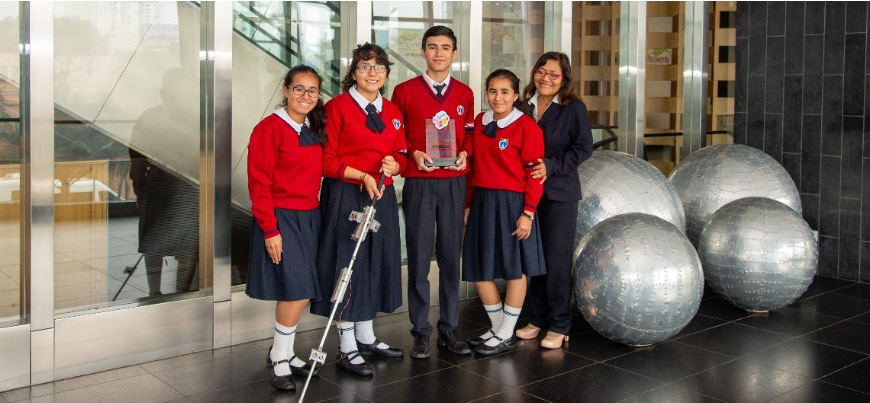Project gallery

Reuse of organic material for biogas production
Report sent by the Teacher
Barbara Daniela Guedes RodriguesSchool
E E Professor Sebastião de Oliveira Rocha São Carlos, São Paulo, BrazilProject team composition
Asaf Prates Almeida, Guilherme Henrique De Andrade, João Vitor Almas Francisco, Maria Paula Melo Gobis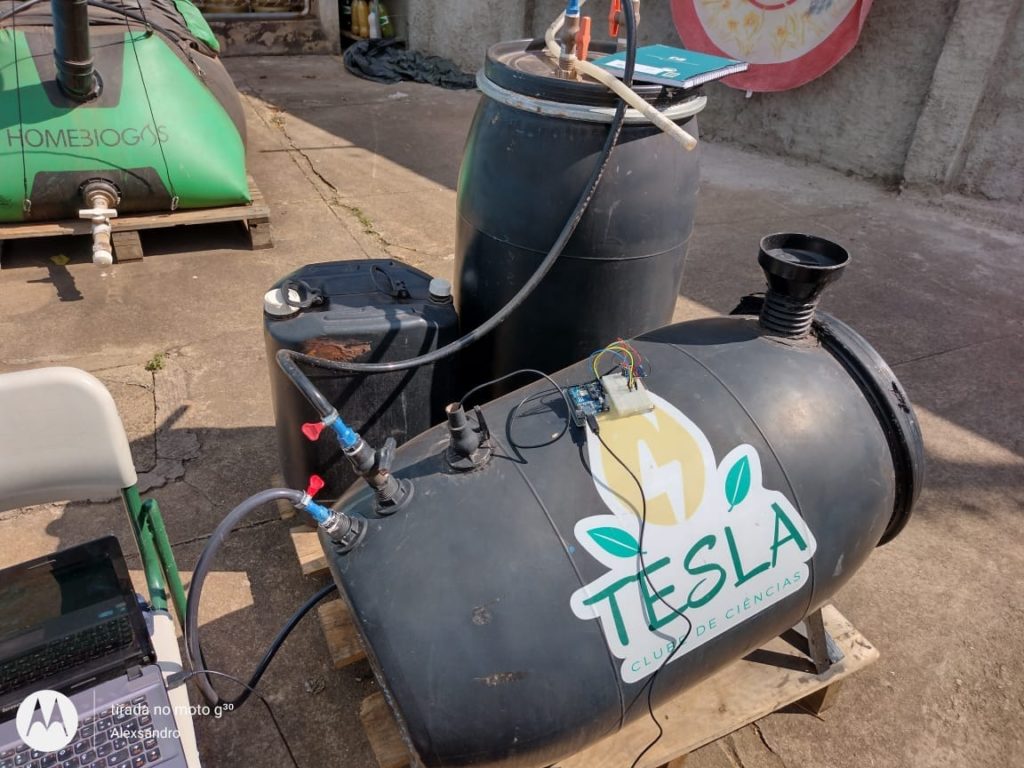
Age of students
12 to 14 years old, 15 to 17 years oldOther areas of knowledge
GeographyProject duration
For more than a yearSoft skills
Collaboration, Creativity, Critical thinkingSTEM areas
Sciences, TechnologyEmpathy: learning from people’s values and needs
Project objective, problem to be solved, and main actions
The main objective of the project was to reuse food that inevitably goes to waste, transforming this organic matter into biogas and biofertilizer. The biogas will be used in the school’s stove, the biofertilizer is used in our vegetable garden and part of it is sold in the school community, generating income.
This project started as a continuation of another project: JADes, which works with the issue of food waste at school and aims to reduce this waste. The TESLA science club, seeing these discarded foods, decided to give them a more suitable destination and within the research conducted they found the biodigester and then came the idea of building a homemade biodigester; which in addition to transforming organic matter into a biodigester and biofertilizer was aligned with one of the SDG that is to produce clean and renewable energy.
The project was the idea of the students, who then came to me. The actions were planned based on a survey to choose the best biodigester model to be built. One of the references used was an article by Química Nova na Escola and we still have this prototype to this day. From there, we verified the feasibility of the prototype and we saw later, with the partnership formed with Empresa 2E, that it was not the most viable and then we arrived at the homemade Biodigester that we have today. But for that, we still went through a lot of research related to what kind of materials best fit the proposal and with the lowest possible cost. This is where the financial support offered by the company entered, helping us buy all the material needed to build the two biodigesters that we currently have.
Definition: better understanding of the challenges
Deepening into the issue and involvement of the school and local community
This idea arose, primarily to meet the demand of our school, but during development, it was observed that if it were built with easily accessible materials, it could be replicated in other schools and even in students’ homes.
Community participation was direct and constant. We had the support of the entire school; as this project depended on reducing waste since the biodigester holds a maximum of 2 kilos of food daily. We count on the support of the lunch ladies who separated these leftovers to be reused and in return we launched a recipe book for recycling food leftovers and made it available to the entire school community.
We have the support of the company 2E – Eficiência Energética, that donated a Commercial Biodigester and gave us mentorships. Clayss gave us financial support and mentorship for participating in the Solidarity Schools Project in Brazil. We had support from many local traders.
Ideation: developing creative solutions
The development of the solution
1st stage: Consists of a theoretical deepening of the main issues to be addressed throughout the project, such as:
- Research on biodigester models;
- Research on stages of anaerobic biodigestion;
- Pollution and diseases transmitted by air pollution;
- Greenhouse effect;
- Inorganic Functions;
- Chemical reactions.
- Gas behavior
The theoretical study can be done in high school books, in specific literary works, or scientific articles available on academic dissemination sites (Scielo, Lilacs, Web of Science, and CAPES Periodicals). The estimated time for this stage is 8 lessons.
2nd stage: Research the best materials to be used in the assembly of a homemade biodigester, considering the practicality and low cost of the materials (giving preference to reusable materials). The estimated time for this stage is 8 lessons.
3rd stage: Assembly of the homemade biodigester, using the chosen materials and seeing the most viable possibilities for building the prototype; always taking care to keep all connections well sealed. The estimated time for this stage is 20 lessons.
4th stage: Assembly of the prototype
5th stage: To prepare the trap we used a 20% calcium hydroxide solution, and the most recent one we used for this system was a wall water filter support. It has the function of capturing the carbonic gasses and hydrogen sulfide produced in biodigestion.
6th stage: With the prototype ready, it’s time for activation – we need anaerobic bacteria – and we find them in cow dung. For this, you have to go to a corral and get this very fresh material. Fill the biodigester with water, add the manure, and then the food scraps. The estimated time for this stage is 6 lessons.
7th stage: The biodigester must be fed daily, and if it has a capacity of 200L, a maximum of 1Kg of food per day is recommended. This stage extends throughout the prototype maintenance period.
8th stage: For monitoring with the Arduino Platform, the following sensors are needed: temperature, methane gas detection, and pH meter.
9th stage: Testing phase using the first prototype, observing what worked, adjusting, and thinking about what to correct for the construction of a second prototype. This stage extends throughout the prototype development period and in parallel with the possible second prototype.
Prototype: making ideas tangible
The construction of the prototype
We have two biodigesters being tested in our school and when we finish, we want to replicate this model in schools and in the homes of people who are interested in this technology.
Test: putting ideas out into the world
Evaluation of the process and the developed solution
In the evaluation process, the following were considered:
- Student attendance, recommending minimum participation in 75% of the total number of meetings;
- Presentation of thematic seminars;
- Preparation of reports and articles;
- Ability to communicate in public;
- Proactivity in solving problems that arise during the educational practice;
- Presentation of work at scientific events, at school, external science fairs, and competitions.
Reflections and pedagogical practices
The value of participating in Samsung Solve for Tomorrow
The 2021 award was the third I participated in with my students; in the first two we were semifinalists and in the last one, we were champions. It was always an incredible experience for the students to have their work recognized nationally, bringing self-esteem and we noticed a considerable difference in them in the classroom.
Achievements and advances perceived by the teacher, throughout the process
Students are more prepared for challenges, focusing on solutions and critical thinking while learning BNCC content and skills.
Challenges faced
Within our project, there were several challenges; from the lack of money to buy the materials at the beginning to the assembly of the prototypes. We had a problem sealing one of the lids, which took us around two months to get. These problems brought a sense of resilience and focus on the solution, which everyone carried into adult and professional life.
Learning incorporated into the teacher’s routine and practice
The STEM methodology is not exclusive to large projects; it is possible to work on small projects that happen in the school routine. In this way I can better contextualize the subject and still use the Science Clubs projects as an example, showing that high school students can make the difference
Discover the related Inspirational case

Brazil

Winner
Youth club and a Biodigester at school: teaching in support of the role of young scientists
Young people put into practice biology and chemistry lessons to transform leftover food from the cafeteria into biogas.
